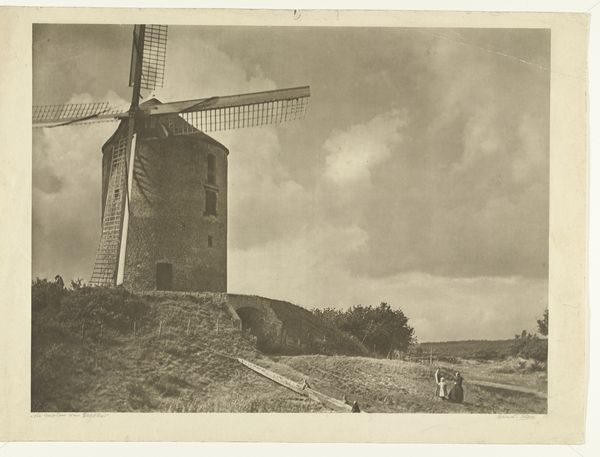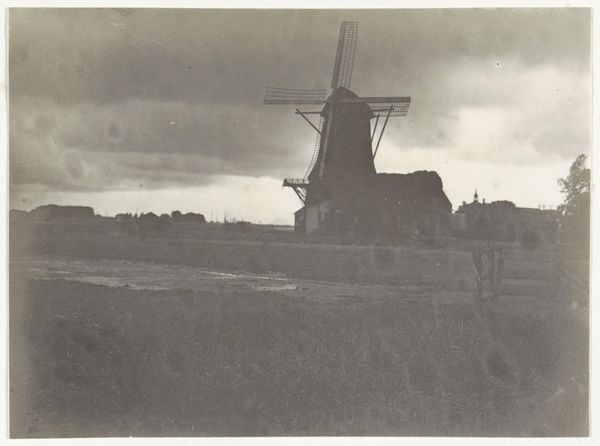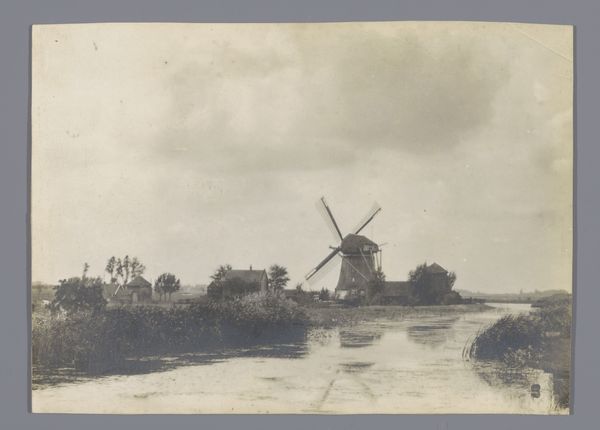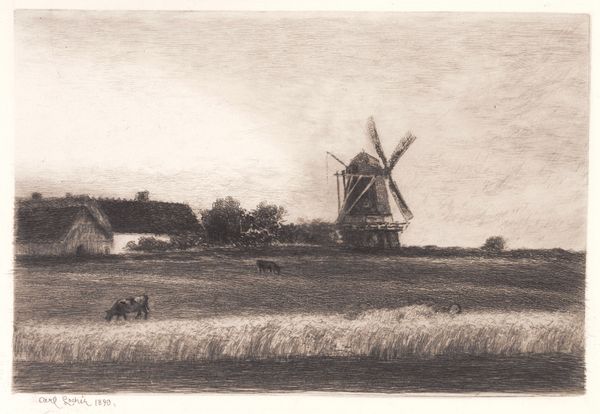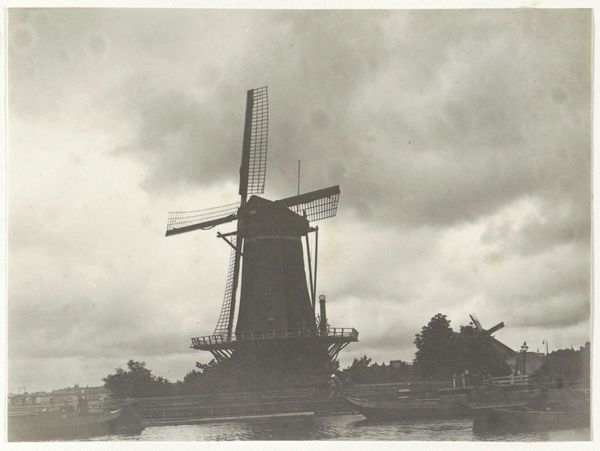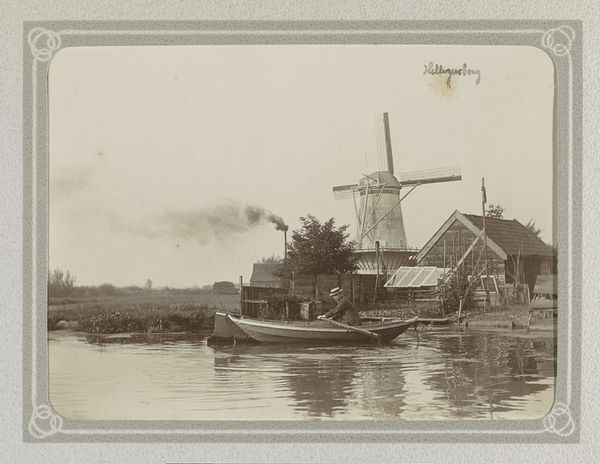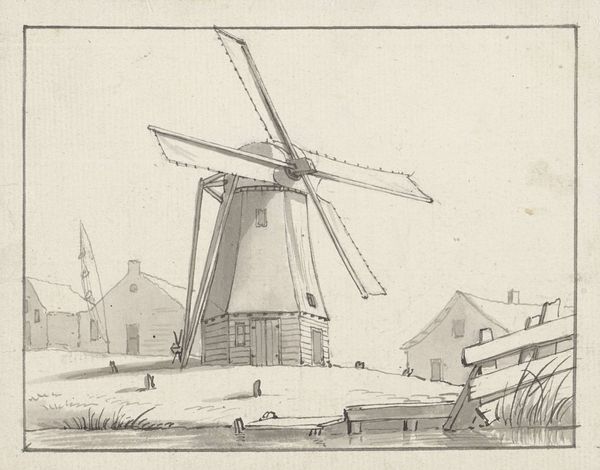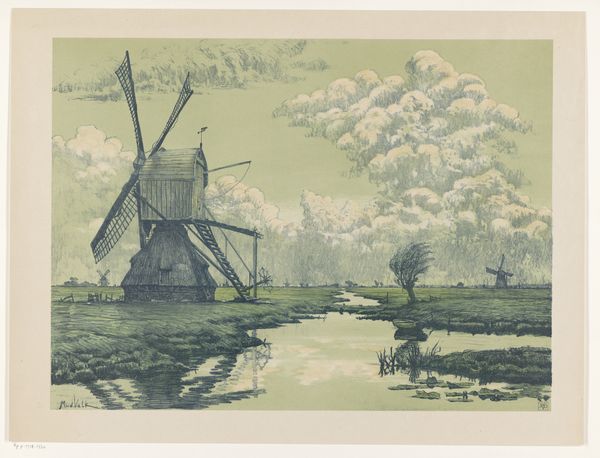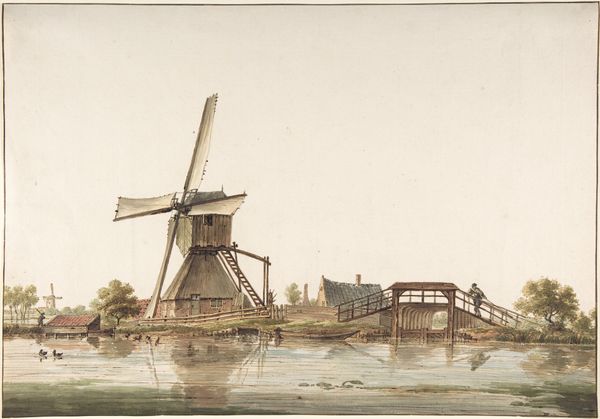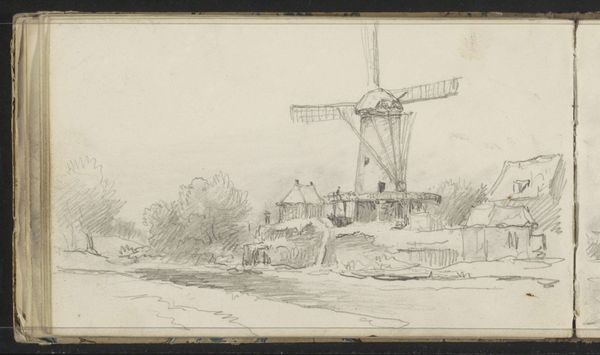
Molen in buurtschap Het Klompje (of: De Klomp), Zeist, aan de Koppeldijk c. 1914
0:00
0:00
print, photography
#
dutch-golden-age
# print
#
landscape
#
photography
Dimensions: height 9 cm, width 12 cm
Copyright: Rijks Museum: Open Domain
Curator: Lambertus Hendrik van Berk created this piece, “Molen in buurtschap Het Klompje (of: De Klomp), Zeist, aan de Koppeldijk,” circa 1914. It’s listed as both a print and a photograph. Editor: Well, it certainly has a somber mood, doesn’t it? The greys and muted greens evoke a sense of stillness, almost melancholy. The windmill dominates the scene, its stark geometry contrasting with the softer lines of the landscape. Curator: Absolutely. You see this melding of traditional Dutch Golden Age landscape aesthetics, though executed through photographic or printmaking technology of the early 20th century. The print medium, with its textures and tonal range, plays a crucial role here. Think of the skilled labor needed to prepare the plates, the specific papers chosen... Editor: The windmill looms large, a central figure with an enduring legacy for Dutch cultural identity. Even in this period of modernization, it stands tall—literally and figuratively—representing ingenuity. Curator: I agree! But the materiality goes further. This photograph or print would have been part of a larger network of image circulation, consumed and re-consumed in albums, books, postcards... objects of everyday life for many, beyond some high-art setting. Editor: Consider what a windmill *means* in terms of cultural memory, it transcends function. It appears so often in the context of Golden age painting as emblems of prosperity, now appearing slightly timeworn or old-fashioned... Is there something significant here? The cottages seem old even for that time, right? Curator: I think that the tension between this rapid modernity and nostalgia for older ways is critical in this work. It points towards this ongoing interplay between nature, industry, and the people living in Zeist. Editor: Agreed. Thank you for that interesting materialist angle to view this. Curator: My pleasure. The symbolism of the windmill only gains richer texture when one sees the material conditions of its representation!
Comments
No comments
Be the first to comment and join the conversation on the ultimate creative platform.

